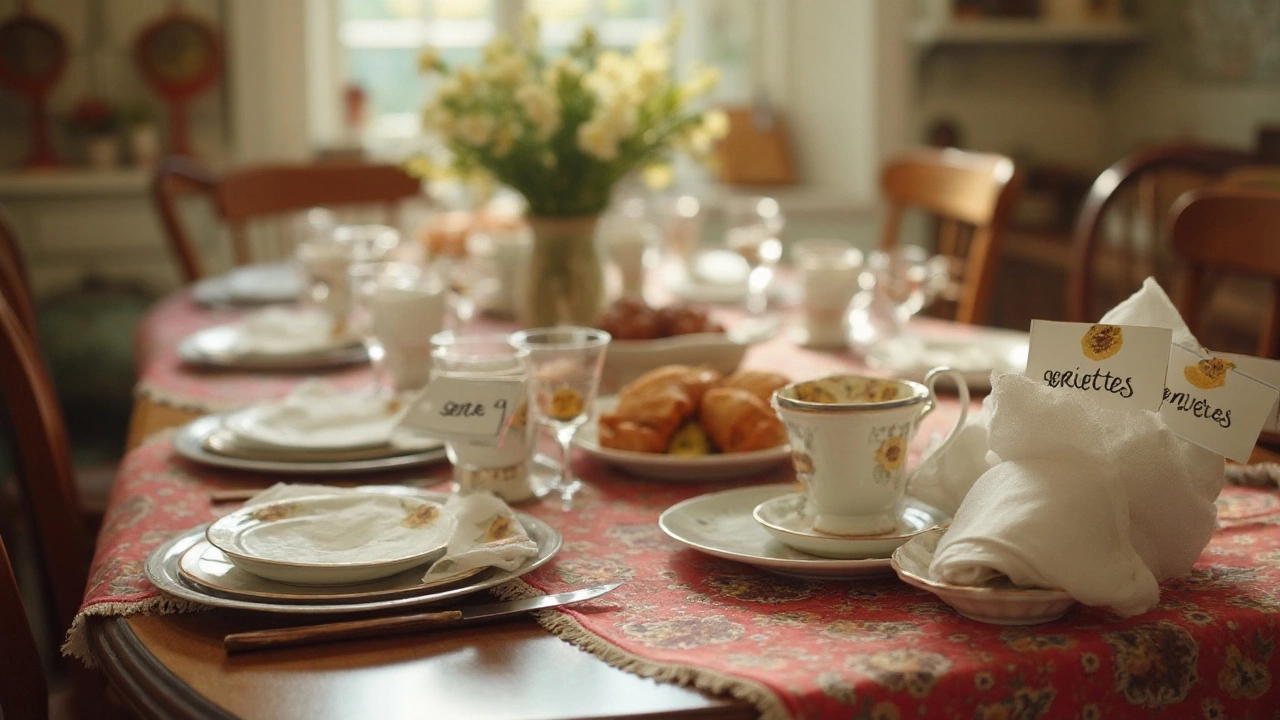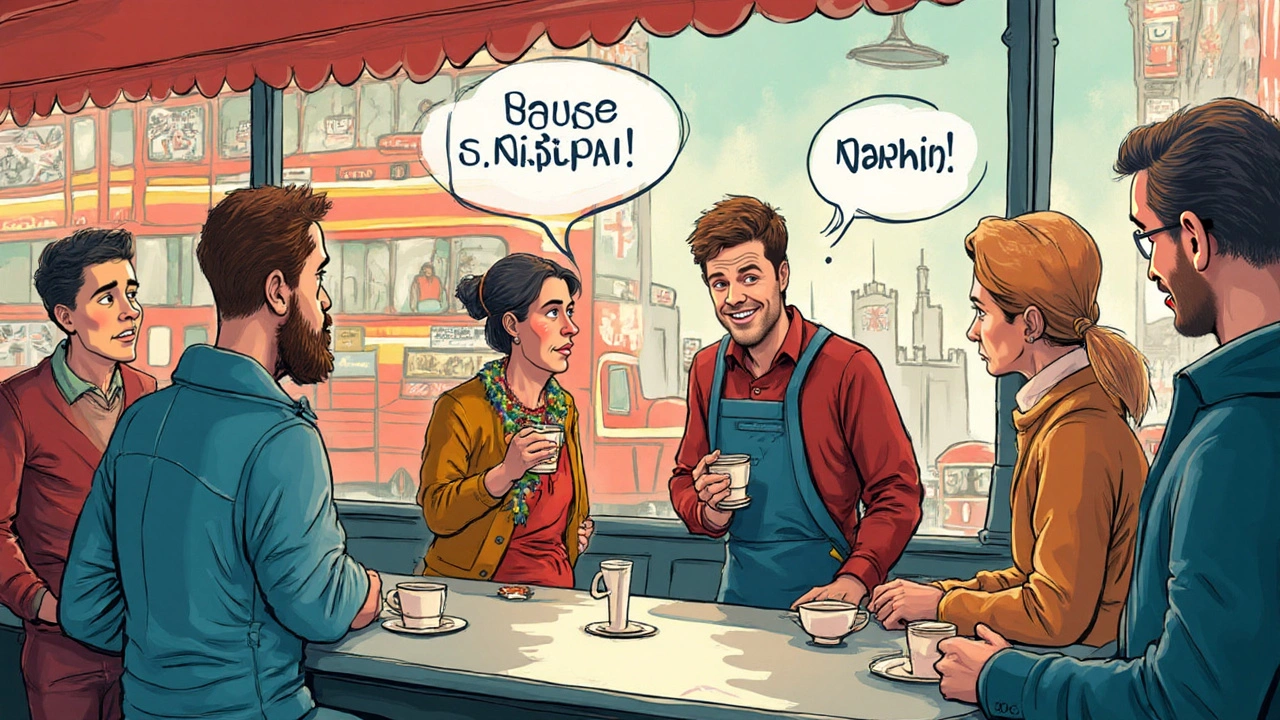What Do the British Call Napkins? British vs American Terms Explained

Ever grabbed a 'napkin' at a UK pub and gotten a blank stare? Tried calling it a 'serviette' in California only to get smirks? This isn’t just another food fight between the US and the UK—it’s about something you touch every lunch break but probably never overthink. British and American English often clash over everyday items, but napkins? That’s where it gets fun, and a bit confusing—especially if you like your sandwiches a bit tidier. My cat Bella is scandalized by crumbs, and even she wants to know what word to use if she ever visits London.
Unpacking the Great Napkin Debate
Let’s clear up the basics first. In the United States, if you need something to wipe your mouth at dinner, you ask for a "napkin." It doesn’t matter if it’s paper or cloth—either way, it’s a napkin. In Britain, the word "napkin" exists, but here comes the twist: you’ll probably hear "serviette" more often, especially for paper ones. But it’s not just an easy swap—the terms signal much more than a simple piece of folded fabric. "Serviette" sounds fancy to Americans, a little posh or outdated. Over in Britain, though, the lines are blurry. If you ask for a "napkin," folks will know what you mean, but order a "serviette" at the local chippy and you’ll fit in perfectly. There’s a class undertone, too—"napkin" is sometimes considered a bit more upper-crust, favored in fancy restaurants and by folks who know their way around a place setting. In everyday cafes, schools, and offices, "serviette" has become the go-to word for anything disposable you dab at your chin.
But do all Brits use "serviette"? Not quite. The word actually comes from French, showing up in British English in the late 19th century. In more traditional circles in England—think afternoon tea with grandma—"napkin" is often used, especially if it’s cloth. In Scotland and Northern Ireland, you might hear both, sometimes even in the same household. Some older etiquette books from England, like those by Debrett’s, flat-out say folks should call it a "napkin" and reserve "serviette" for the help. Snobbish? Maybe. But it’s a good clue that the word choice can hint at old British class boundaries, a hidden linguistic handshake that says who belongs where at the table.
The Historical Roots: From Serviettes to Napkins
The British haven’t always fussed about napkins or serviettes—because centuries ago, people wiped their hands on the tablecloth (seriously). Around the 14th century, big shared cloths called “nappes” were rolled across the table. The word "napkin" originally meant a small nappy—yup, the same word as a baby’s diaper, but for faces and fingers instead of baby bottoms. The French word "serviette" slipped into English during the 1800s, when French was all the rage among the upper classes. But over time, as disposable paper products became more common in the 20th century, "serviette" caught on in casual settings while "napkin" stayed with classier affairs.
Some etiquette guides from as late as the 1950s marked "serviette" as a “no-no” in certain homes—only those with a butler would dare call it a "serviette." That probably sounds stuffy now, but you still spot the divide at fancy London hotels, where the menu promises cloth napkins, never serviettes. So, if you find yourself at a garden party and someone offers you a "serviette," you’re safe to accept, even if your grammar school teacher would have blushed. The linguistic tension here isn’t just about showing off education or background—it’s tied to Britain’s obsession with social signals, both subtle and silly. British napkins have always been more than just crumbs-catchers; they’re mini badges of table manners, status, and taste.

British Table Manners: How to Use (and Talk About) Napkins
Napkin etiquette in Britain isn’t as pushy as you’d think, but there are a few unwritten rules. First, never tuck your napkin—oops, serviette—into your collar, unless you’re under six or eating spaghetti with enough sauce for a small flood. At fancier places, you’re expected to fold your napkin neatly on your lap and dab, not wipe, your mouth. Leaving your serviette crumpled on the table screams “tourist” or worse, “teenager.” If you’re leaving the table mid-meal, fold the napkin loosely and place it on your chair as a signal you’ll be back.
Some holiday traditions get particularly specific. At Christmas in the UK, don’t be surprised if your napkin comes in the shape of a Christmas tree—fancy origami folds are part of the festive charm. At afternoon tea, napkins are petite and always placed on the lap before sipping. If you’re at a picnic or grabbing fish and chips, the word "serviette" is more likely to get you what you want (usually a thin, papery square that tears at the first sign of grease). Tip: if you’re ever unsure what to say, just hold out your hand and smile—most Brits are understanding and love to explain native quirks. And if Bella, my cat, ever scored an invite to tea time in London, she’d probably ignore all etiquette and just sit on the napkin, whether it’s called that or a serviette.
Quirky British Food Lingo – Beyond Napkins
Navigating a British menu or dinner table goes way beyond napkins and serviettes. Do you fancy some “crisps” (American “potato chips”) with your sandwich? Or do you want “chips” with your fish—not “fries”? Brits order their desert “pudding,” which could mean anything sweet. As for the bread served at the start of dinner, it’s often accompanied by butter but rarely olive oil unless you’re somewhere trendy.
Then there’s the confusion with “biscuits”—which, in Britain, are sweet cookies, while an American biscuit is a soft, savoury, scone-like bread. And don’t even get Brits started on “pants” (underwear) versus “trousers” (what Americans call pants). The lesson? British table talk is an obstacle course for the uninitiated. But that’s part of the fun: every meal is an adventure in language as well as flavor. To wrap up your meal properly in the UK, remember this: if it’s paper, “serviette” is usually safe. If it’s cloth and you’re somewhere posh, ask for a napkin. If you’re aiming to fit in and make locals smile, just join the conversation and ask what they’d call it. At the very least, you’ll come away with a clean chin and a more British-sounding vocabulary. If only all cross-cultural clashes were solved with a serviette (or a napkin) and a smile.